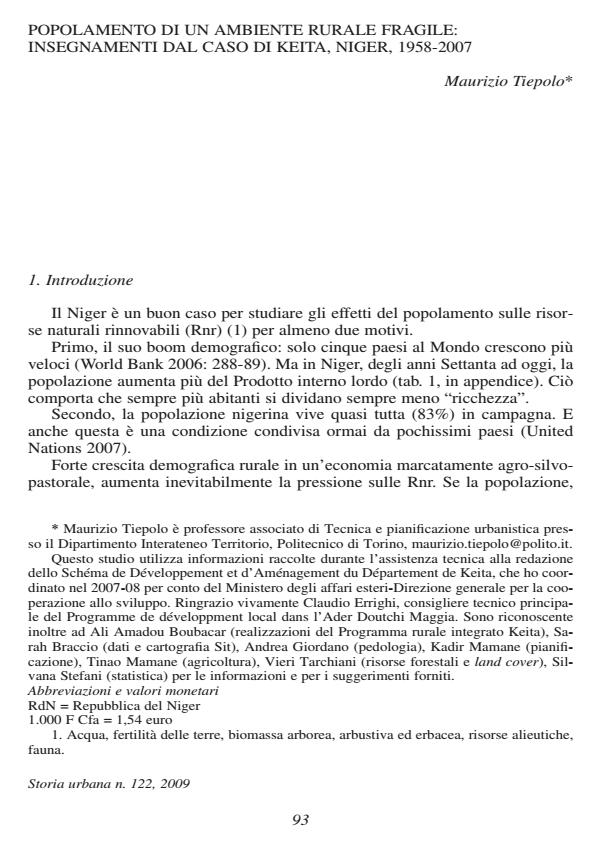Popolamento in un ambiente rurale fragile: insegnamenti dal caso di Keita, Niger, 1958-2007
Titolo Rivista STORIA URBANA
Autori/Curatori Maurizio Tiepolo
Anno di pubblicazione 2009 Fascicolo 2009/122
Lingua Italiano Numero pagine 37 P. 93-129 Dimensione file 6119 KB
DOI 10.3280/SU2009-122005
Il DOI è il codice a barre della proprietà intellettuale: per saperne di più
clicca qui
Qui sotto puoi vedere in anteprima la prima pagina di questo articolo.
Se questo articolo ti interessa, lo puoi acquistare (e scaricare in formato pdf) seguendo le facili indicazioni per acquistare il download credit. Acquista Download Credits per scaricare questo Articolo in formato PDF

FrancoAngeli è membro della Publishers International Linking Association, Inc (PILA)associazione indipendente e non profit per facilitare (attraverso i servizi tecnologici implementati da CrossRef.org) l’accesso degli studiosi ai contenuti digitali nelle pubblicazioni professionali e scientifiche
Population growth in a fragile rural environment: lessons from a case - study of Keita, Niger, 1958-2007 (Processo di popolamento di un ambiente rurale fragile: insegnamenti dal caso di Keita, Niger, 1958-2007). Niger is a perfect case for studying the consequences of population growth on renewable natural resources (Rnr) since it is the 5th fastest growing county demographically and the country with the highest share of rural population. Studies of population pressure on Niger’s Rnr have reached opposite findings. On the one hand, studies showed agricultural intensification, densification, and natural assisted regeneration. On the other hand, they also highlighted rain-fed crop encroachment on forest, bush, and grazing land; decrease in yields; and conflicts over access to water pasture. The coun- try is using a wide range of participatory tools for Rnr management and local development planning, but there has been little discussion on the effectiveness of these tools. This study seeks to find out what the trends regarding population growth and Rnr management are in Keita Department (5,000 sq km, pop. 258,000), a semi-arid, remote rural area where only 26% of the land is arable. 30 years of increasing population pressure (up to 86 inh. /sqkm in 2007) brought rain-fed crop encroachment on bush and rangeland. Intensification is absent both in rain-fed and in irrigated agriculture. Nevertheless, since 1984 the Keita rural development program has provided cereal selfsufficiency to at least one fourth of the 1988-2001-population growth and has reduced population pressure on forestland. At the present, municipal development plans have identified strategies based mainly on micro realizations. Road construction, microcredit, and higher value-added production are not being considered and strategies to secure the next generation’s access to crop, forest, and grazing land are not being defined.
Maurizio Tiepolo, Popolamento in un ambiente rurale fragile: insegnamenti dal caso di Keita, Niger, 1958-2007 in "STORIA URBANA " 122/2009, pp 93-129, DOI: 10.3280/SU2009-122005